#japanese food cookbook
Text
Satisfy Your Wanderlust and Hunger with These Delicious Global Recipes
Food has actually always been a way for people to connect and experience various cultures. Whether it's trying a new meal at a regional restaurant or cooking a traditional recipe in your home, food allows us to check out the world without leaving our cooking area. The happiness of attempting new dishes and flavors is unparalleled, as it opens our palate to an entire new world of possibilities.
youtube
Italian Delights: Pasta, Pizza, and More
Italian cuisine is known for its simplicity and use of fresh active ingredients. The history of Italian cuisine go back centuries, with each region having its own special dishes and tastes. From the pasta dishes of the south to the hearty stews of the north, Italian cuisine provides something for everyone.
Some popular Italian dishes include pasta carbonara, margherita pizza, and tiramisu. These meals are made with simple ingredients like pasta, tomatoes, cheese, and eggs, but the mix of flavors is what makes them genuinely unique. To make genuine Italian dishes at home, it is necessary to use premium active ingredients and follow traditional recipes. Fresh herbs like basil and oregano are important for adding flavor, along with excellent quality olive oil.
Enliven Your Life: Indian Cuisine
Indian cuisine is understood for its strong flavors and usage of spices. With its diverse local cuisines, Indian food offers a wide array of dishes to explore. From the abundant curries of the north to the spicy seafood meals of the south, Indian food is a feast for the senses.
Some popular Indian spices include turmeric, cumin, coriander, and cardamom. These spices not only add taste to meals however likewise have numerous health advantages. Turmeric, for example, has anti-inflammatory homes and is often used in traditional Ayurvedic medication.
Timeless Indian meals like curry and biryani are made with a combination of spices and aromatics like onions, garlic, and ginger. To make these meals in your home, it is necessary to toast the spices before adding them to the meal, as this assists to release their flavors. It's likewise crucial to utilize fresh components and cook the meal slowly to permit the flavors to develop.
Savor the Flavors of Thailand
Thai cuisine is known for its balance of sweet, sour, salted, and spicy flavors. With its vibrant meals and fresh active ingredients, Thai food is a favorite amongst food fans around the globe.
Some popular Thai dishes consist of pad Thai, green curry, and mango sticky rice. These dishes are made with ingredients like lemongrass, fish sauce, and coconut milk, which provide their distinct tastes. To cook with Thai active ingredients, it is necessary to source them from Asian supermarket or online merchants. Fresh herbs like cilantro and Thai basil are likewise essential for including flavor to Thai dishes.
From Tacos to Tamales: Mexican Food to Crave
Mexican cuisine is a blend of indigenous and European flavors, resulting in a rich and diverse culinary custom. From the street food stalls of Mexico City to the conventional recipes passed down through generations, Mexican food is a celebration of flavor and tradition.
Some popular Mexican dishes consist of tacos, enchiladas, and guacamole. These meals are made with components like corn tortillas, tomatoes, avocados, and chili peppers. To make homemade tortillas, it is very important to utilize masa harina (corn flour) and follow conventional strategies for shaping and cooking them. Salsas are likewise an important part of Mexican food, and making them at home permits you to personalize the flavors to your liking.
French Cuisine: Classic Dishes and Modern Twists
French food is known for its beauty and elegance. From traditional meals like coq au vin to modern twists on French cuisine like fusion dishes and molecular gastronomy, French food is a celebration of method and flavor.
Some classic French meals include coq au vin, ratatouille, and cr me br l e. These meals are made with active ingredients like chicken, tomatoes, eggplant, and cream. To make these dishes in the house, it is essential to utilize high-quality components and follow traditional methods. French cooking typically includes slow cooking and layering of tastes, so persistence is crucial.
Discover the Richness of Middle Eastern Food
Middle Eastern cuisine is a blend of tastes from the Mediterranean, North Africa, and the Arabian Peninsula. With its usage of spices and fresh ingredients, Middle Eastern food is a pleasure for the senses.
Some popular Middle Eastern dishes include hummus, falafel, and shawarma. These meals are made with active ingredients like chickpeas, tahini, and lamb. To prepare with Middle Eastern spices like sumac and za'atar, it is essential to source them from specialty stores or online retailers. Fresh herbs like parsley and mint are likewise vital for adding taste to Middle Eastern meals.
Japanese Delicacies: Sushi, Ramen, and More
Japanese cuisine is known for its accuracy and artistry. From sushi to ramen to tempura, Japanese food is a celebration of simpleness and balance.
Some popular Japanese dishes include sushi, ramen, and tempura. These meals are made with active ingredients like rice, fish, noodles, and vegetables. To make homemade sushi, it's important to utilize top quality fish and follow standard methods for rolling the sushi. Making ramen broth from scratch can be lengthy but is well worth the effort for the rich flavors it imparts.
South American Specializeds: Empanadas, Arepas, and More
South American food is a combination of indigenous and European tastes. From empanadas to arepas to ceviche, South American food is a celebration of custom and taste.
Some popular South American meals include empanadas, arepas, and ceviche. These meals are made with ingredients like cornmeal, beef, fish, and citrus. To make homemade empanada dough, it's important to use masa harina (corn flour) and follow standard techniques for shaping and cooking them. Fillings can vary from area to region, but common components consist of beef, cheese, and vegetables.
African Pleasures: Spicy Stews and Savory Snacks
African food is as diverse as the continent itself. From spicy stews to mouthwatering snacks, African food is a celebration of taste and tradition.
unofficial studio ghibli cookbook include jollof rice, tagine, and injera. These dishes are made with ingredients like rice, meat, vegetables, and spices. African spices like berbere and harissa include depth and complexity to dishes. To cook with these spices, it is very important to source them from specialty stores or online sellers. Fresh herbs like cilantro and mint are likewise necessary for including taste to African meals.
Bringing the World to Your Kitchen area
Checking out different cuisines enables us to experience the richness of various cultures. By attempting new dishes and flavors, we can expand our culinary horizons and find new favorites. Cooking worldwide food at home not just permits us to recreate our preferred meals however likewise gives us a much deeper understanding of the culture behind the food.
When sourcing ingredients for worldwide recipes, it is very important to discover specialty shops or online sellers that carry genuine items. This guarantees that you are using the greatest quality ingredients and getting the most authentic tastes. Purchasing devices like a good chef's knife or a mortar and pestle can likewise improve your cooking experience.
Why not step out of your comfort zone and attempt something brand-new? Whether it's making homemade pasta from scratch or try out spices in a curry, checking out different foods is a journey that will improve your life and your taste. Get your apron, turn on some music, and let the flavors of the world transportation you to far-off places.
#justonecookbook#japanese cookbook#studio ghibli cookbook#japanese recipe book#japanese food cookbook#japanese cooking cookbook#japanese cuisine cookbook#japanese cooking 101#best japanese cookbook#best japanese recipe book#good japanese cookbooks#sushi cook book#japanese cooking a simple art#the unofficial studio ghibli cookbook#unofficial studio ghibli cookbook#the unofficial ghibli cookbook#japanese soul cooking#japanese one cookbook#japanese soul cooking book#japanese soul cooking cookbook#one cookbook japanese#the jewish japanese cookbook and how to raise wolves#japan the vegetarian cookbook#japanese jewish cookbook#jewish japanese cookbook#cooking with liz
1 note
·
View note
Text

Mosaic Sushi 🍣✨
Reference by Just One Cookbook!
#artists on tumblr#digital illustration#illustration#food illustration#food illo#sushi#sushitime#sushilovers#japanese food#mosaic sushi#just one cookbook#foodie#foodlover#food drawing#recipe#cooking
23 notes
·
View notes
Text
begging anyone who wants to learn how to cook to go look at just one cookbook dot com
seriously they have more recipes than i could ever count, they have clear instructions, step-by-step photos, and videos for their recipes (occasionally there are typos but just use logic. if it says to add the meat to the meat when we were just cutting vegetables, it means ad the vegetables to the meat). everything i've cooked from there is great and i'm at the point now i don't even need to always follow the recipes exactly bc now i'm familiar with how the cuisine works. so so yummy and it's totally friendly if you know nothing about japanese food, there are posts on her blog explaining what different ingredients and techniques are and everything. great place for both beginners to cooking and beginners to japanese food
#seriously there are SO MANY recipes...#also you can buy the physical cookbook if you want but on the website it's all free#also it's kinda funny bc there are so many recipes they had to make more cookbooks so now there's several#even though it's. called “just one cookbook”#unityrain.txt#cooking#recipes#japanese food#japanese cuisine#japanese cooking#food#tw food
14 notes
·
View notes
Text

#foodpics#foodgasm#foodlover#foodphotography#foodstagram#japanese food#comfort food#anime food#healthy food#food recipes#food recipe at home#cookbook
27 notes
·
View notes
Text
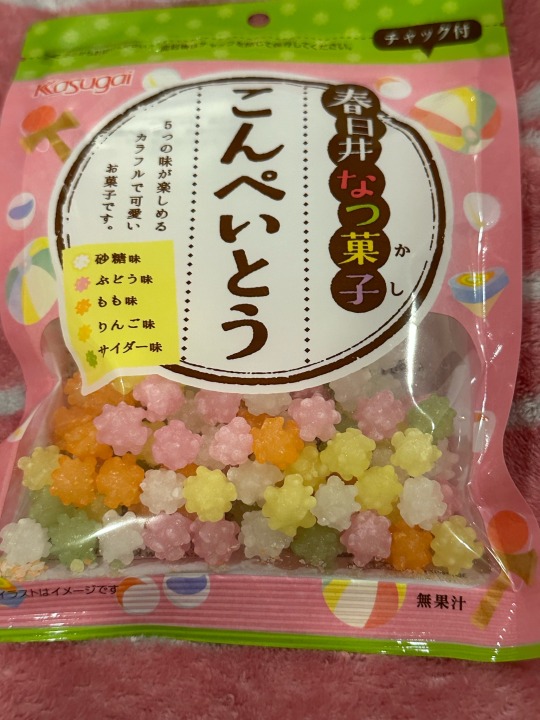
Today I was at a Japanese market and I saw that they had konpeitō so I bought a little bag to try it. I’d been curious about it ever since I learned that the Star Bits in Super Mario Galaxy were based off of it, happy to report that it tastes pretty good 🍬
#text post#not Kirby stuff#I remember playing Mario Galaxy as a kid and always wondering what the Star Bits tasted like lmao#I like Japanese candy last time I was at this market I bought some of the Kirby 4D peach flavored gummy candy#they didn’t have the Kirby gummies today though so I just bought the konpeitō#I wish they had some Kirby cafe locations here in America I really want to try the foods there#or at the very least I wish they’d publish a Kirby cafe cookbook or something so I could make the food at home#I think they have the Mario cafe at Universal Studios Hollywood but no Kirby cafe
2 notes
·
View notes
Text
Cult Sando
Book review:
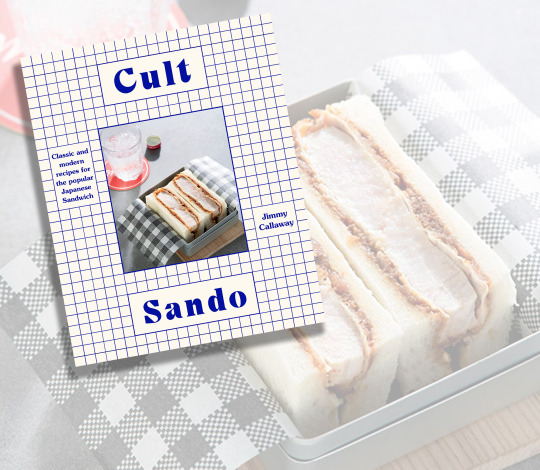
Sando, the evolved form of the sandwich, is an iconic Japanese food. Crustless, thick milk bread firmly pressed around a diverse range of possible fillings. Optimised for maximum photogenic cross cut and immaculately packaged, they sit in konbini and vending machines everywhere. Cult Sando is a recipe book by Australian pro foodie Jimmy Callaway. Tastefully presented in both senses of the word.
According to the book, the origin of the sando can be traced to a bread boom in Japan in the 70s. The origin of milk bread is slightly less clear cut. Bread historians vary on what qualifies and when the accepted form arose. Also referred to as shokupan, this faintly moist, fluffy bread is sliced thick and crustless in all recipes. In something of a reflected takeover, the Japanese sandwich, and its vital milk bread are both increasingly appearing outside of Japan.
An early footnote explains about the difference between US, UK tablespoons and Australian tablespoons. This telling localisation reflective of the intended readership. Jimmy Callaway is an indeed an antipodian. He comfortably drops various Sydney references in interviews and an early book signing was held at Balmain's Roaring Stories bookstore. He was formerly chef at Firedoor restaurant. Cult Sando is his debut book.
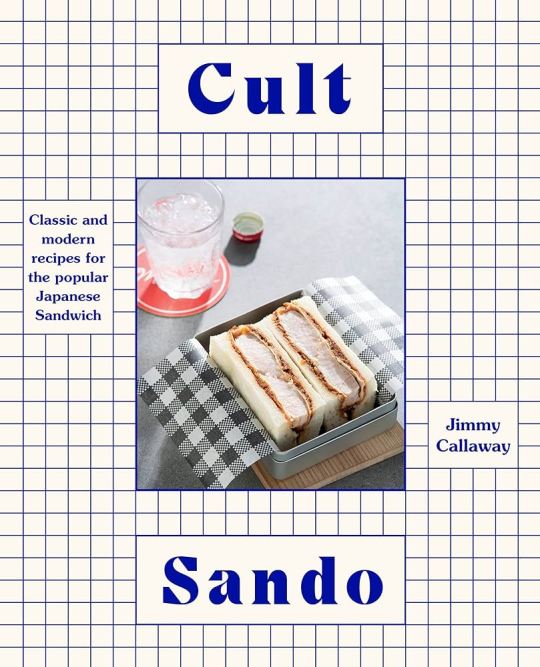
Shelf: 596.63 CAL
Cult sando : classic and modern recipes for the popular Japanese sandwich
by Jimmy Callaway ; photographer Alan Benson.
Sydney, N.S.W. Harper by Design 2022
ISBN: 9781460762554
111 pages : colour illustrations ; 22 cm. "Includes index (pages 106-108).
Text in English.
#review#cook book#cookbook#callaway jimmy#food#recipes#sandwich#sando#japanese cuisine#yoshoku#shokupan#milk bread#new 2024 04#review 2024 04#jcentral
1 note
·
View note
Text

(チキンカレー chicken curry (x)
0 notes
Photo
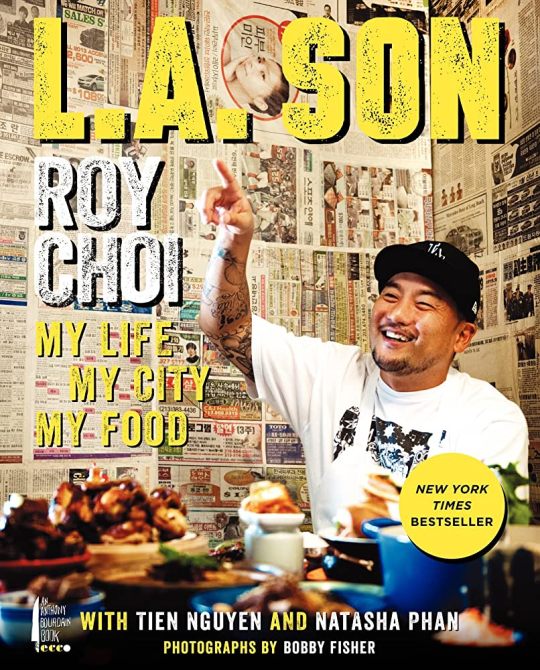





Some of my favorite cookbooks.
#food#cookbooks#books#cooking#baking#bread#japanese bread#dessert#roy choi#tiki#cocktails#betty crocker
1 note
·
View note
Text
"$311 vs $17 Tempura: Pro Chef & Home Cook Swap Ingredients | Epicurious"
youtube
#Youtube#japanese culture#japanese#japan#japanese food#japanese cuisine#food mention#food#chef#cheflife#love to cook#lets cook#cooking#cookbook#seafood recipes#snacks recipes#recipes#tempura#how to#fried food#munchies#asian food#asian cuisine#asian#asia#deep fried#deep fryer#culture#lifestyle#tasty recipes
1 note
·
View note
Text
I finally got a cookbook focused entirely on Japanese food. I got onto Facebook for once yesterday and found myself browsing my local yard sale group. It's in really great condition, like brand new, and was being sold for five dollars. I may not have much money, but it was such a good bargain for something I've been wanting for ages.
I want to find other cookbooks for other parts of the world, too, because I love learning about food from around the world. It's going to be a lifelong thing.
-Sammy ⚽😺
1 note
·
View note
Text
Look what Google just recommended to me!!!!
I already own (and love) Shabbat and Portico.
But I am OBSESSED with the rest and must acquire them immediately.
Top of my list is Love Japan because LOOK AT THIS BEAUITFUL BOWL OF MATZO BALL RAMEN!!!!!
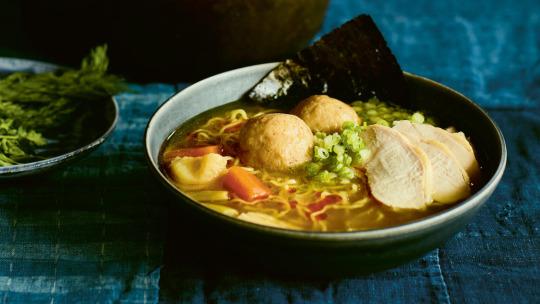
We hear a lot about Jewish people in Europe and MENA, but we do not hear a lot about Jewish culture as it blends with East Asian cultures, and that’s a shame. Not just because it erases the centuries of Jewish populations there, but also because there are plenty of people of mixed decent. People who may not have come directly from Jewish communities in East Asia, but people who have a Japanese Father and a Jewish Mother, for example. Or people in intercultural marriages. These are all real and valuable members of the Jewish community, and we should be celebrating them more. This cookbook focuses on Jewish Japanese American cuisine and I am delighted to learn more as soon as possible. The people who wrote this book run the restaurant Shalom Japan, which is the most adorable name I’ve ever heard. Everything about this book excites and delights me.
And of course, after that, I’m most interested in “Kugels and Collards” (as if you had any doubts about that after the #kugel discourse, if you were following me then).

This is actually written in conjunction with an organization of the same name devoted to preserving the food and culture of Jews in South Carolina!
I’m especially excited to read this one, because I have recently acquired the book Kosher Soul by the fantastic, inimitable Michael J. Twitty, which famously explores faith and food in African American Jewish culture. I’m excited to see how Jewish soul food and traditions in South Carolina specifically compare and contrast with Twitty’s writings.
I’m also excited for all the other books on this list!
A while ago, someone inboxed me privately to ask what I recommended for people to read in order to learn more about Jewish culture. I wrote out a long list of historical resources attempting to cover all the intricate details and historic pressure points that molded Jewish culture into what it is today. After a while I wrote back a second message that was much shorter. I said:
Actually, no. Scratch everything I just said. Read that other stuff if you want to know Jewish history.
But if you want to know Jewish culture? Cookbooks.
Read every Jewish cookbook you can find.
Even if you don’t cook, Jewish cookbooks contain our culture in a tangible form. They often explain not only the physical processes by which we make our meals, but also the culture and conditions that give rise to them. The food is often linked to specific times and places and events in diaspora. Or they explain the biblical root or the meaning behind the holidays associated with a given food.
I cannot speak for all Jews. No one can. But in my personal observation and experience—outside of actual religious tradition—food has often been the primary means of passing Jewish culture and history from generation to generation.
It is a way to commune with our ancestors. I made a recipe for chicken soup or stuffed cabbage and I know that my great grandmother and her own mother in their little Hungarian shtetl. I’ll never know the relatives of theirs who died in the Holocaust and I’ll never meet the cousins I should have had if they were allowed to live. But I can make the same food and know that their mother also made it for them. I have dishes I make that connect me to my lost ancestors in France and Mongolia and Russia and Latvia and Lithuania and, yes, Israel—where my relatives have lived continuously since the Roman occupation even after the expulsions. (They were Levites and Cohens and caretakers of synagogues and tradition and we have a pretty detailed family tree of their presence going back quite a long time. No idea how they managed to stay/hide for so long. That info is lost to history.)
I think there’s a strong tendency—aided by modern recipe bloggers—to view anything besides the actual recipe and procedures as fluff. There is an urge for many people to press “jump to recipe” and just start cooking. And I get that. We are all busy and when we want to make dinner we just want to make dinner.
But if your goal isn’t just to make dinner. If your goal is to actually develop an understanding of and empathy for Jewish people and our culture, then that’s my advice:
Read cookbooks.
#Judaism son#Jewish culture#Jewish cuisine#culinary tradition#culinary history#foodways#cultural preservation#tangible culture#jumblr#Judaism#food#cuisine#kugel discourse#Jewish joy#jewish positivity#Jews around the world#East Asian Jews
148 notes
·
View notes
Text

Happy Pokémon Day! February 27th is the anniversary of the first two Pokémon games’ release in Japan, and it’s a minor holiday in my house, as a fun excuse to make Pokémon inspired food, watch some Pokémon shows or movies (we’re going to watch Netflix’s new Pokémon Concierge this year!), and get excited about upcoming games and releases. This year, we’re making a Pokémon Sword and Shield inspired burger-steak curry and I’m making a dessert from the Pokémon Cookbook by Victoria Rosenthal. It’s one of my favorite fandom cookbooks – all the recipes are vegetarian or vegan, to get around the awkward question of where does the meat in the Pokémon universe come from?
But that’s not all we’re making! Ever since Nicki and Isabel were released, I’ve been dying to do a post about them and Pokémon’s infamous “Jelly Filled Doughnuts”, better – and more accurately! – known as onigiri.

Pokémon was released in the United States in 1998 via two Gameboy games: Pokémon Red and Pokémon Blue. The games quickly caught on to be one of the biggest pop culture phenomenon of the late 90’s and early 00’s, and as a kid at the heart of this explosion, I can’t overstate how much of a big deal it was. One of the great things about Pokémon – and probably why it has such lasting, widespread appeal – is that there are so many ways to interact with the franchise, and the marketing doesn’t skew hugely towards one gender or the other. Cool, tough Pokémon like Charizard got pretty similar billing to cute, pink Pokémon like Jigglypuff, and there were so many options for potential favorites that it was easy for any kid to find some creature to attach themselves to.
One of my petty complaints with Nicki and Isabel’s collection and books is the almost complete lack of mention of Pokémon and other anime that was really popular among kids in 1999. I know AG probably didn’t want to shell out for licensing deals with Nintendo or The Pokémon Company, but their stories just don’t feel accurate without discussing their prized binder of Pokémon cards or begging their parents to take them to see the Pokémon movie in theaters. Maybe the authors were just a little too old to get caught up in Pokémania?
I’ve also always thought its close overlap with the Beanie Babies crazy helped get millennial children like me very into the “gotta catch ‘em all” aspect of the franchise. Is this why I’m such a crazy toy collector as an adult? Who knows.
The Pokémon anime was one of the main ways kids like me got hooked on the franchise, because not everyone was allowed to have a Gameboy of their own (me), and not everyone liked video games, but even if you didn’t like video games, the cartoon might appeal to you. Although it was far from the first Japanese cartoon to air on US television, Pokémon was one of if not the first truly mainstream favorites of the 1990’s. 4Kids, the company in charge of dubbing the show into English, decided that American kids wouldn’t understand or be open to certain aspects of the show that reflected its Japanese roots, and so made a lot of strange choices in rewriting the script. One of the most notorious was deciding Brock’s rice balls were actually jelly filled doughnuts:

Onigiri – also known as omusubi or nigirimeshi – are balls of rice with a variety of fillings inside. They’re often compared to sandwiches, as an easy, quick, cheap meal or snack that combines carbs and other ingredients. While the concept of taking a rice ball and stuffing it full of other tasty treats goes way back to ancient Japan, the triangle shape became popular in the 1980’s thanks to a new machine that automated the filling process. Further developments over the last 40 years have created unique ways to prepackage onigiri without making the nori wrapping sticky. The ones we made were an attempt at recreating the “Hawaiian” (spam and pineapple) rice balls from our favorite food hall back in DC. One of my favorite pandemic indulgences was getting take out from the food hall, which often included a sampler of some of my favorite onigiri, and I haven’t been able to find anything close to similar where we are now. One of the many reasons I’m excited to move!
Even as a kid, I wasn’t convinced the food in the anime was fried dough with fruit jelly inside, because they sure look like rice. I also think 4Kids didn’t anticipate that Pokémon’s widespread popularity would inspire many of its fans – including me – to become absolutely obsessed with Japanese food and culture. I would’ve been more excited if they’d just been straight with me and shown more Japanese food on the show, and then probably begged my parents to make it or take me to a restaurant that made it. While I can’t confidently cite numbers of how many other people were first exposed to Japanese culture and food through Pokémon and franchises like it, I do think it’s a bit of a missed opportunity to highlight how things like this exposed kids like Nicki and Isabel to parts of a culture outside their own!

54 notes
·
View notes
Text
We decided to have Japanese golden curry for dinner tonight and I got an idea for meal plans.
While at the Asian Festival this year we got their cookbook, which has a wealth of recipes across the continent.
I think it would be fun to have one day a week designated to trying a food from a different country, working from Japan and slowly go west.
And not like.... just Asia, like keep going.
Because I'm getting the hang of stir fry and curry, but I'd also like to try some new things.
93 notes
·
View notes
Note
Hiyah! Could I request headcanons for Leona and Trey and Jamil (seperately ofc) with a female s/o who is great at making Japanese food and snacks and shares them with everyone including their families?
Fem! S/O makes Japanese food and sweets
Author's Note: Everyone can be in the kitchen, not only women. If you think women only belong in the kitchen, then go away!
Pairing: Leona, Trey, & Jamil x Fem! Reader
Warnings: Female Reader
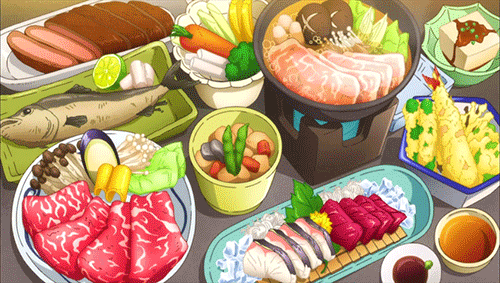
Leona
At first, he would be napping then get woken up by you to try something you made.
He would say that he's losing sleep because of you, but we know the truth.
One day while at Savanaclaw, you borrowed the kitchen and Leona was napping in his room. You were cooking up a storm as Jack came back from his workout and you offered to cook something since he was curious about your cooking.
Leona woke up to a savory aroma and followed it all the way to the kitchen to see Jack eating your food as you listened to what he had say about it.
The audacity of your friend/his underclassmen
He strolled over and rested his chin on your shoulder then opened his mouth, indicating to feed him.
You gave him some, but after that, Leona would hang around you more if you cooked and would buy you some ingredients or cookbooks you wanted.
He would taste test your food and tell you if anything was wrong with it.
Teases you that if he dies, it's on your hands.
He took you home and found you spending your time in the library as well as kitchen, experimenting or researching new flavors to use in your craft.
Its safe to say that Cheka enjoyed your food to the point he would always ask Leona if you made anymore yummy food whenever he sees him either when at the palace or visiting Leona at NRC.
Trey
The Cooking Duo
Trey would probably ask for your help when he tries to make Japanese sweets.
Totally just for the assistance, not to spend time with you.
Anyway, you two would spend time together in the kitchen, even fi you're cooking food while he makes sweet.
He would taste test in the exchange of you doing the same of his sweets.
Will give you detailed analysis about everything but will also give you simple feedback just to spite you.
You both do this to each other.
During break, he took some of your food home and within the week, he texted that your invited over during break if you weren't busy which you weren't.
when you asked him what suddenly brought this, he told you that his family ate the containers full of your food and were wanting to meet you.
You showed up to the house and was welcomed by a bunch of Trey's younger siblings. His parents told you that they wanted to sell your sweets as a holidays time treat in exchange that they'd pay you.
Agreeing, you help around the bakery and get to hear about how Trye was when he was younger from both parents and customers who've been around for a while.
Trey and you hardly had a moment by yourself without his family spying on you two.
Covered in flour at times? Yes.
When you leave, his siblings are holding onto you, not wanting you to leave.
Jamil
Another one where you two would probably have cooking dates.
Would be straight forward with you if you ask him to taste test your food.
You both you exchange lunches with each other for the other to have a taste of what you both made.
Safe to say, Kalim and Najma were fans of your cooking if you sent any home with him. He has to hide it from Najma, espcially if he brings some home.
Would suggest different flavors to use in your recipes.
Just don't give him anything date flavored.
Enjoys when you make curry and rice for him to eat.
I could see him refusing to share if someone asked to try your food from the lunch you made him.
When the Training camp is over, he is immediately happy when he realizes he can eat your food again without Vil breathing down his neck.
#twisted wonderland x mc#twisted wonderland x reader#twst x reader#leona kingscholar#leona x reader#trey x reader#trey clover#trey clover x reader#jamil viper x reader#jamil x reader#jamil viper#leona kingscholar x reader
887 notes
·
View notes
Text
something that really gets me about atsushi is that his favorite food, as the series emphasizes over & over again, is ochazuke
because, like, according to just one cookbook, which is one of my fave sources for authentic japanese recipes:


like it's a meal of leftover rice, tea/broth, and whatever toppings you throw on it. it's not glamorous or fancy or anything, so it tells the audience so much that to atsushi, just having something hot & decent to eat is some sort of luxury
18 notes
·
View notes
Text
BIBLIOGRAPHY - “ANIME FOODIES: LAID-BACK CAMP THE MOVIE”

This is the bibliography for our entry in the Anime Foodies series of panels, “Anime Foodies: Laid-Back Camp The Movie”. The sources include not only places from which we garnered background of the food we were cooking, but also sources that helped us determine how to craft our own version of the recipes we were creating.
This is the second Anime Foodies panel which has a formal bibliography of sources. Those marked with double asterisks are regular sources we’ve used in all of the panels in the series and are a good starting point for anyone interested in Japanese food and its history.
Bibliography:
Afro. Laid-Back Camp. Vol. 6, Yen Press, 2019.
Afro. Laid-Back Camp. Vol. 7, Yen Press, 2019.
“Anethum graveolens L.” Royal Botanic Gardens Kew, https://powo.science.kew.org/taxon/urn:lsid:ipni.org:names:837530-1.
Baker, Liren. “Taco Rice: Okinawa Taco Rice” Kitchen Confidante, https://kitchenconfidante.com/taco-rice-okinawa-taco-rice.
“Braised Yuba (Tofu Skins) with Vegetables” Sunberry Jam, https://sunberryjam.com/braised-yuba-with-vegetables/.
“Buttered Beere 1588” Oakden, https://oakden.co.uk/buttered-beere-1588/.
“Dutch Oven Roast Chicken” Self-Proclaimed Foodie, https://selfproclaimedfoodie.com/dutch-oven-roasted-chicken/#wprm-recipe-container-33149.
“Dutch Oven Roasted Chicken with Vegetables” Camping Adventures, https://adventures.camp/dutch-oven-roasted-chicken-with-vegetables/.
“Finnish Salmon Soup (Lohikeitto)” Skinny Spatula, https://skinnyspatula.com/salmon-soup-lohikeitto/.
Friesen, Katy June. “Where Did the Taco Come From?” Smithsonian Magazine, https://www.smithsonianmag.com/arts-culture/where-did-the-taco-come-from-81228162/.
Greg. “Hot Buttered Rum 2 Ways AND Fat Washing! | How to Drink.” YouTube, uploaded by How To Drink, 23 Nov. 2019, https://www.youtube.com/watch?v=cCbEwyntSCM.
“Hokkaido Salmon Hot Pot (Ishikari Nabe) 石狩鍋” Just One Cookbook, https://www.justonecookbook.com/salmon-hot-pot/.
“Hoto Noodle Soup from Yamanashi ほうとう” Just One Cookbook, https://www.justonecookbook.com/hoto-noodle-soup-yamanashi/#wprm-recipe-container-79243.
“Hōtō Noodle Soup (Hōtō Nabe)” RecipeTin Japan, https://japan.recipetineats.com/hoto-noodle-soup-hoto-nabe/.
“Houtou (ほうとう)” Food in Japan, https://www.foodinjapan.org/kanto/yamanashi/houtou/.
“How to make Houtou – Yamanashi local speciality noodle dish recipe” Japanese Cooking Class Tokyo, https://japanesecookingclasstokyo.wordpress.com/2014/01/03/how-to-make-houtou-yamanashi-local-speciality-noodle-dish-recipe/.
“How to Make the Best Tempura 天ぷら” Just One Cookbook, https://www.justonecookbook.com/tempura-recipe/.
Hua, Charlie. “Kiritanpo: Trying out one of Akita’s local specialties” Japan Travel, https://en.japantravel.com/akita/kiritanpo/55809.
“Hypomesus olidus” FishBase, https://fishbase.de/summary/Hypomesus-olidus.html.
“Hypomesus olidus” Integrated Taxonomic Information System – Report, https://www.itis.gov/servlet/SingleRpt/SingleRpt?search_topic=TSN&search_value=162031#null.
**Ishige, Naomichi. The History and Culture of Japanese Food. London, Kegan Paul Limited, 2001.**
“"Ishikari" Salmon Hot Pot (Ishikari nabe)” NHK World – Japan, https://web.archive.org/web/20201101192650/https://www.nhk.or.jp/dwc/food/recipe/kyou_12310.html.
“Ishikari Nabe Recipe (Salmon and Miso Hot Pot in Hokkaido)” Cooking With Dog, https://cookingwithdog.com/recipe/ishikari-nabe/.
“Japan-Mexico Relations (Basic Data)” Ministry of Foreign Affairs of Japan, https://www.mofa.go.jp/region/latin/mexico/data.html.
“Kiritampo Nabe (Rice Stick Hot Pot)” NHK World, https://web.archive.org/web/20180318093216/http://www.nhk.or.jp:80/dwc/recipes/detail/138.html.
“Kiritanpo (きりたんぽ)” Food in Japan, https://www.foodinjapan.org/tohoku/akita/kiritanpo/.
Laid-Back Camp. Directed by Yoshiaki Kyougoku. C-Station, 2018.
Laid-Back Camp Season 2. Directed by Yoshiaki Kyougoku. C-Station, 2021.
Laid-Back Camp The Movie. Directed by Yoshiaki Kyougoku. C-Station, 2022.
Miller, Max. “Making 400 Year Old Buttered Beere.” YouTube, uploaded by Tasting History with Max Miller, 10 Mar. 2020, https://www.youtube.com/watch?v=ZlMhZvOX2ps.
“Motsunabe” Japanese food style, https://jpnfood.com/recipe/meat/motsunabe.
“Motsunabe: How to Eat and the Best Restaurants in Fukuoka” Savor Japan, https://savorjapan.com/contents/discover-oishii-japan/motsunabe-how-to-eat-and-the-best-restaurants-in-fukuoka/.
“Motsunabe recipe もつ鍋” The Japanese Food Lab, https://thejapanesefoodlab.com/motsunabe/.
“Motsunabe (もつ鍋)” Food in Japan, https://www.foodinjapan.org/kyushu/fukuoka/motsunabe/.
“Okinawa Taco Rice and Cheese (Cafe Style)” Sudachi Recipes, https://sudachirecipes.com/okinawa-taco-rice/.
“Okinawa Taco Rice (Video) タコライス” Just One Cookbook, https://www.justonecookbook.com/taco-rice/.
“Recipe of Speedy Lightly Flavored! Hakata-style Motsunabe (Offal Hot Pot) with Soy Sauce Based Soup” Ground-Skillet, https://ground-skillet.web.app/734-recipe-of-speedy-lightly-flavored-hakata-style-motsunabe-offal-hot-pot-with-soy-sauce-based-soup/.
“Salmon Hot Pot (Ishikari Nabe)” RecipeTin Japan, https://japan.recipetineats.com/salmon-hot-pot-ishikari-nabe/.
“Salmon Soup” Happy Foods Tube, https://www.happyfoodstube.com/salmon-soup/.
Sam. “Aburi Technique for Fish” Chef Epic, https://chefepic.com/aburi-technique-for-fish/.
“Seared Salmon Sushi (Aburi)” Cooking with Cocktail Rings, https://cookingwithcocktailrings.com/seared-salmon-sushi-aburi/.
**Singleton Hachisu, Nancy. Japanese Farm Food. Kansas City, Andrews McMeel Publishing, 2012.**
**Singleton Hachisu, Nancy. Preserving the Japanese Way. Kansas City, Andrews McMeel Publishing, 2015.**
“【Smelt Tempura】 How to make Smelt tempura With technical explanation to stand fins” YouTube, uploaded by 逢禅天ぷらチャンネル / AIZEN TEMPURA CHANNEL 1 Oct. 2020, https://www.youtube.com/watch?v=H3KTXNGGAL4.
“Soy Milk Hot Pot 豆乳鍋” Just One Cookbook, https://www.justonecookbook.com/soy-milk-hot-pot-tonyu-nabe/.
“Taco Rice (タコライス)” No Recipes, https://norecipes.com/okinawa-taco-rice/.
“Tentsuyu” Oishi Washoku Recipes, https://www.oishi-washoku-recipes.com/tentsuyu.
“‘Tentsuyu’ (Tempura Dipping Sauce)” Hiroko’s Recipes, https://www.hirokoliston.com/tentsuyu-tempura-dipping-sauce/.
Turkell, Michael Harlan. “Foil Yaki Is the Best” Taste, https://tastecooking.com/foil-yaki-best/.
U.S. Fish and Wildlife Service. Wakasagi (Hypomesus nipponensis): Ecological Risk Screening Summary. 8 Nov. 2019, https://www.fws.gov/sites/default/files/documents/Ecological-Risk-Screening-Summary-Wakasagi.pdf.
“What is the “King Tacos” which is loved by Okinawan?” Okinawa Labo, https://okinawa-labo.com/en/okinawa-taco-rice-1966.
**Wondrich, David. Imbibe! From Absinthe Cocktail to Whiskey Smash, A Salute in Stories and Drinks to “Professor” Jerry Thomas, Pioneer of the American Bar. Updated and Revised Edition. New York City, TarcherPerigee, 2015.**
“〆まで美味しい ごま豆乳鍋つゆ ストレート” Mizkan, https://www.mizkan.co.jp/product/group/?gid=07101.
“簡単タコライス” Lettuce Club, https://www.lettuceclub.net/recipe/dish/22978/.
“王道タコライス” Delish Kitchen, https://delishkitchen.tv/recipes/196315721972580774. “簡単!すぐ出来!タコライス レシピ・作り方” Kurashiru, https://www.kurashiru.com/recipes/80ca4e93-29d6-422a-8168-cf409ac46d23.
#nos anime#camping food#camping#food#laid back camp#yuru camp#anime#anime foodies#anime food#yurucamp#laid back camp the movie#anime bibliography#bibliography
28 notes
·
View notes